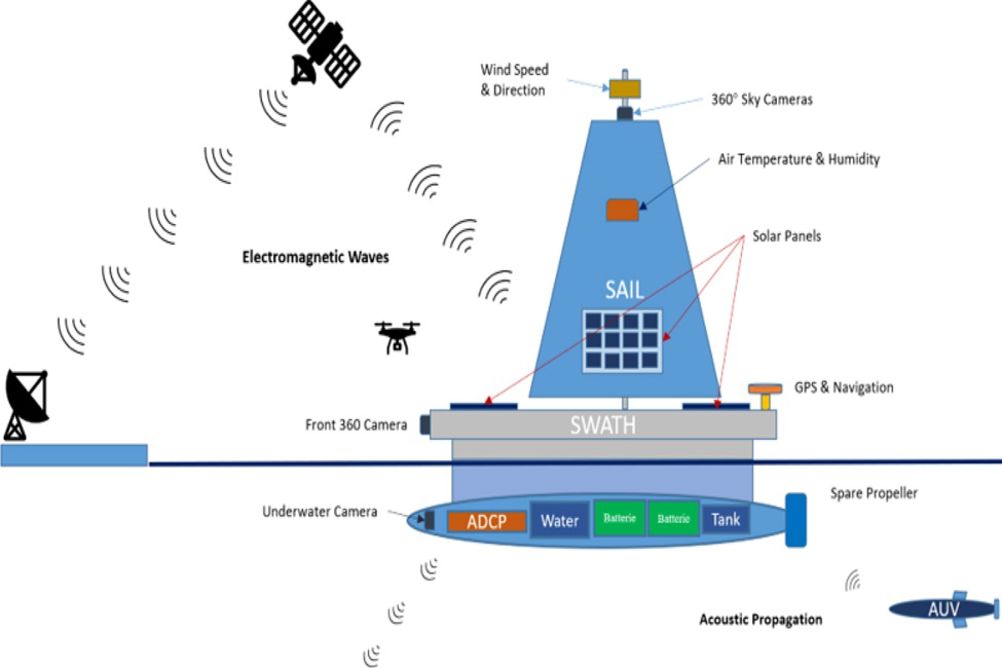Starting with a small waterplane area twin hull (SWATH) vessel, engineers at Florida Atlantic University (FAU) designed a fully autonomous system to monitor the ice from the air and the water. The SWATH acts as a mothership and docking station, collecting measurements itself but also generating and storing power for autonomous underwater vehicles (AUVs) and unmanned aerial vehicles (UAVs).
Related content
With the twin hull providing stability, the mothership also features automated sailing, as well as solar panels and an underwater turbine to generate its power. The system is described in detail in the journal Applied Ocean Research.
“Our proposed autonomous observation platform system offers a comprehensive approach to studying the Arctic environment and monitoring the impact of melting sea ice,” said senior author Tsung-Chow Su, a professor in FAU’s Department of Ocean and Mechanical Engineering.

“Its design and capabilities make it well-suited to overcome the challenges of the Arctic’s unique conditions. By providing a self-sustaining platform for continuous data collection, this design supports scientific research, environmental protection and resource management, laying the foundation for year-round monitoring of the Arctic.”
With limitations to satellite observation of sea ice and continuously crewed Arctic missions impractical, the FAU platform would provide an alternative that would allow sea ice to be measured in high detail all year round. Arctic sea ice has been decreasing at record levels. Understanding its exact rate of decline is vital for understanding global climate change and the more local ecological impacts of the melt.
“Our researchers have developed an innovative observation system tailored to the Arctic environment, offering critical data on sea ice melt that satellites and manned vessels are unable to capture,” said Stella Batalama, PhD, dean of the FAU College of Engineering and Computer Science.
“Long-term monitoring is essential, as it provides deeper insights into the lasting impacts of Arctic sea ice loss, which can guide informed policy and management decisions.”











Deep Heat: The new technologies taking geothermal energy to the next level
No. Not in the UK. The one location in the UK, with the prospect of delivering heat at around 150°C and a thermal-to-electrical efficiency of 10-12%,...